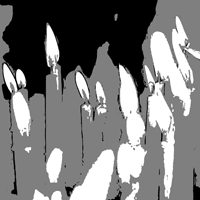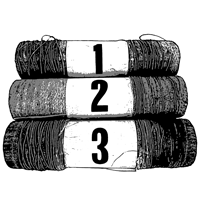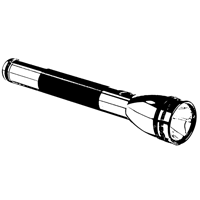I’ve been running the old Cinematic Unisystem Buffy: the Vampire Slayer game weekly (online) for most of a year now. We mostly settled on it because it had the best character sheet on Roll20 of the systems I was considering for my next game, but I’m finding it holds up surprisingly well.
One of the things I like most about it is that it has a simple yet comprehensive spell-creation system, which is always a plus for a game featuring magic. Unlike so many other such systems, the game has an inbuilt limitation to keep the players from inventing an optimized, OP spell. Half of that is that it’s key to getting the level (and, thus, difficulty) of a spell down to assign fairly significant limitations (either a material cost or GM-controlled event or mystical resource), so if something proves way too powerful, the GM can just reduce access to the components. The other is that all casting has a compounding penalty within the same day (with an additional penalty for casting the same spell repeatedly). Magic is, thus, either useful for utility/prep or as a one-shot big gun in a fight, which has so far been fine in my campaign.
And it’s fun to make up the new spells for the players to find.
Below are several of the new spells I’ve created for the campaign. Note that when it lists a dollar value, that’s meant to be a real cost: in my game I’ve limited access to the Resources quality and we handwave incidental lifestyle money as being spent on incidental lifestyle stuff. Thus, the only money they have to spend on spell components (and other things with a game effect) is money earned as “treasure” on camera, either looting or selling off loot.
Spells
Fury of the Moon (Level 2)
 This spell only functions outdoors at night, drawing down a bolt of radiant moonlight that burns the target. It is particularly effective against vampires, forging moonlight into a brand almost as potent as the sun.
This spell only functions outdoors at night, drawing down a bolt of radiant moonlight that burns the target. It is particularly effective against vampires, forging moonlight into a brand almost as potent as the sun.
Source: Books
Quick Cast: Yes
Power Level: 2
Requirements: Valuable moon-themed talisman (not consumed on casting), moonlit night while outdoors, miscellaneous minor spell components (that are consumed), a few-minute ritual for non-Sorcerers
Effect: The spell deals 3x Willpower damage per Success Level on a gibbous moon. This increases to 4x on a full moon, but decreases to 2x on a quarter moon, and 1x on a crescent moon. It deals +1x to vampires and other entities vulnerable to sun or moonlight. For example, it would deal 5x Willpower per Success Level to a vampire under a full moon. This damage is spread out evenly over the course of ten rounds, and ends early if the target can get under cover from the moonlight.
Aspect Analysis: Requires 1 caster (0), Ritual (0), Quick Cast (+1), Noticeable Scope (+1), Slow Effect (-1), Rare Ingredients (-2), Major Harm (+3)
Invocation of Vengeance (Level 1)
 This ritual beckons a vengeance demon to appear. The demon is not bound on arrival.
This ritual beckons a vengeance demon to appear. The demon is not bound on arrival.
Source: Books (Episode 3.9)
Quick Cast: No
Power Level: 1
Requirements: Golden bowl, various herbs, short ritual including the correct form of invocation for the specific desired vengeance demon
Effect: The named vengeance demon appears nearby.
Aspect Analysis: Requires 1 caster (0), Ritual (0), Minor Scope (0), Limited Target Selection (-1), Unusual Ingredients (-1), Major Summoning (+3)
Lantern of Revealing (Level 2)
 This spell empowers a jack o’ lantern to reveal and solidify spirits caught in its light. It is a form of the Solidify Spirit spell that can only be used on All Hallows Eve.
This spell empowers a jack o’ lantern to reveal and solidify spirits caught in its light. It is a form of the Solidify Spirit spell that can only be used on All Hallows Eve.
Source: Books
Quick Cast: Yes
Power Level: 2
Requirements: Jack o’ lantern with rune-etched candle and particular carvings taking 20 minutes or so to create (or, if quick-cast, simply the incantation “Spiritum revela” with the light emanating from the caster’s eyes)
Effect: The spirit become corporeal within the light of the spell, gaining physical attributes equal to its mental attributes, and Life Points equal to three times its Brains score. If reduced to 0 Life Points, it is banished back to the underworld for another year or more.
Aspect Analysis: Requires 1 caster (+0), Ritual (less than half an hour) (+0), can be Quick Cast (+1), noticeable scope (one being) (+1), long duration (+1), restricted use (-4), major effect (+3).
Reveal the Quiescent Beast (Level 2)
 This spell reveals if a subject is a werewolf or other kind of animal shapeshifter.
This spell reveals if a subject is a werewolf or other kind of animal shapeshifter.
Source: Books
Quick Cast: No
Power Level: 2
Requirements: Wolfsbane, silver, and other relatively challenging components, as well as a couple minutes of chanting
Effect: Nearby werewolves glow with a lambent flame
Aspect Analysis: Requires 1 caster (0), recitation time (+1), noticeable scope (+1), short duration (-1), unusual ingredients (-1), severe effect (+2)
Cross Reference: The research used to unearth this spell suggested the following other lycanthrope-related spells. You have +2 successes toward researching them:
- Blessed Silver Shot: Enchants a silver bullet or arrow/bolt to strike true against lycanthropes
- Fury of the Moon: Attack spell useful in the moonlight
- Seal the Virulent Bite: Keeps you from being infected by lycanthropy or similar afflictions (or keeps a lycanthrope from being infectious while transformed)
- Soothe the Savage Beast: Pacifies or puts to sleep animals and bestial monsters
- Wear the Beast Skin: Magical ritual to become effectively a werewolf (without the forced transformation)
Seal the Virulent Bite (Level 1)
 This spell protects the target from the bite of a lycanthrope or similar types of infectious monster bite. If cast on an infectious monster (including a lycanthrope in human form before transforming), it instead renders that target not infectious for the duration.
This spell protects the target from the bite of a lycanthrope or similar types of infectious monster bite. If cast on an infectious monster (including a lycanthrope in human form before transforming), it instead renders that target not infectious for the duration.
Source: Books
Quick Cast: No
Power Level: 1
Requirements: Glyphs painted onto the skin in a few-minute ritual from a mixture of wolfsbane, powdered silver, and other ingredients which become temporary tattoos once the spell is cast
Effect: For the duration of the effect, the target cannot be infected/cannot infect others. The spell lasts one hour per Success Level, and, if at least 5 successes are gained, it lasts until the next moonset if that would be longer.
Aspect Analysis: Requires 2 casters (-1), ritual time (0), noticeable scope (+1), long duration (+1), unusual ingredients (-1), noticeable strength (+1)
Soothe the Savage Beast (Level 3)
 This spell calms an animal or bestial monster, and may even put the target to sleep.
This spell calms an animal or bestial monster, and may even put the target to sleep.
Source: Books
Quick Cast: Yes
Power Level: 3
Requirements: A heaping handful of powdered opium poppies (highly illegal!), which are tossed into the air in front of the target while chanting the spell
Effect: The target beast is calmed for one minute per Success Level. Most creatures will stop attacking under this effect, but even those under strong rage or orders subtract the Success Levels from their attacks while under the effect. If the Success Levels are greater than the target’s Willpower doubled, they usually go to sleep and will remain asleep until woken, even after the spell expires.
Aspect Analysis: Requires 1 caster (0), instant cast (+2), noticeable scope (+1), medium duration (0), rare ingredients (-2), severe effect (+2)
Thermite Fireball (Level 1)
 (This spell was haphazardly generated by Agnes, Danny, and Zara with help from Eve and Anthony. It started at 3 but will reduce in difficulty to 0 as the kinks are ironed out when cast as a full ritual, but remains 2 for quick-cast by a single caster.)
(This spell was haphazardly generated by Agnes, Danny, and Zara with help from Eve and Anthony. It started at 3 but will reduce in difficulty to 0 as the kinks are ironed out when cast as a full ritual, but remains 2 for quick-cast by a single caster.)
Source: Invented
Quick Cast: Yes
Power Level: 0 (Quick Cast 2)
Requirements: 16 fl oz of thermite (a Sprite bottle’s worth), a similar amount of distilled water, and various other mystical components, included in an approximately hour-long ritual (Witches and Warlocks need only combine the ingredients with some properly-conjugated Latin said over the effect)
Effect: The caster throws a silvery, white-hot fireball at a single target that does Willpower (Doubled) times success levels fire damage.
Aspect Analysis: Requires 3-9 casters (-2), a lengthy ritual (-1), noticeable scope (+1), instant duration (+0), unusual ingredients (-1), and severe harm (+2) (single caster when quick cast for +3)
Walk a Mile (Level 5)
 This invocation of the goddess can only be used when the walls of reality are thin, and causes the casters to disappear and enter a dreamlike fugue where they inhabit the body of their worst enemy or someone they otherwise hate until the following midnight. The inhabited target cannot be magical, supernatural, or even completely aware of the supernatural or will shrug off the effect (forcing the caster into their next-biggest enemy). Otherwise, the possessed individual is still semi-conscious, will resist strong out of character actions, and may ultimately treat the whole thing as a strange dream or unusual psychiatric event.
This invocation of the goddess can only be used when the walls of reality are thin, and causes the casters to disappear and enter a dreamlike fugue where they inhabit the body of their worst enemy or someone they otherwise hate until the following midnight. The inhabited target cannot be magical, supernatural, or even completely aware of the supernatural or will shrug off the effect (forcing the caster into their next-biggest enemy). Otherwise, the possessed individual is still semi-conscious, will resist strong out of character actions, and may ultimately treat the whole thing as a strange dream or unusual psychiatric event.
Source: Reverse engineered from accidental casting
Quick Cast: No
Power Level: 5
Requirements: Short ritual and invocation of the goddess for empathy and seeing behind the masks others create; auspicious date such as Halloween
Effect: Everyone involved in the casting immediately falls unconscious and then disappears the next time they are unobserved. The next time their possessed target wakes, the caster is in control of their actions, but uses their character statistics. The spells ends the following midnight, but exorcism effects may eject the caster earlier. The caster reappears in the original casting location asleep, and wakes there the next morning or when woken.
Aspect Analysis: Requires one caster (+0), Ritual casting (+0), Major scope (+4), Very long duration (+2), Restricted use (-4), Major mind/emotions (+3)
Will of the Coven (Level 1)
 This spell was an old protective ritual, usually cast before delving into magics that affected the mind.
This spell was an old protective ritual, usually cast before delving into magics that affected the mind.
Source: Grimoire of the Vestals
Quick Cast: No
Power Level: 1
Requirements: A half-hour long ritual, including glyphs painted on the forehead of all to be protected
Effect: The success levels, minus the number of people to be protected, minus the number of hours the spell will be active, is the effective rank in the Resistance: Demonic Powers quality that all subjects have for the duration. The subjects must all be present for the full ritual casting, but do not all need to participate in the ritual.
Aspect Analysis: Requires 3-9 casters (-2), a lengthy ritual (-1), severe scope (+2), long duration (+1), no special requirements (+0), and noticeable mental effect (+1)
Assemblages
Forge Logs (Level 2)
 This assemblage creates highly compact flammable chemicals packed around an electronic mechanism that can semi-miraculously control their ignition rate without melting until the object is fully consumed. It is intended, though the use of a synched radio controller, to make a specially-constructed forge burn hotter and better for the purposes of forging and smelting metals.
This assemblage creates highly compact flammable chemicals packed around an electronic mechanism that can semi-miraculously control their ignition rate without melting until the object is fully consumed. It is intended, though the use of a synched radio controller, to make a specially-constructed forge burn hotter and better for the purposes of forging and smelting metals.
Source: Invented by Anthony Hollinger
Quick Cast: No
Power Level: 2
Requirements: Half a unit of thermite powder, misc other chemicals available in a well-stocked science lab but costing about $30 if ordered, $100 of electronics, and over half an hour of tinkering
Effect: One log is produced for every three successes on the Superscience roll, and they remain viable for at least a month if stored in a cool, dry place. Logs can be used in three distinct ways:
- If used in its standard function, it improves and normalizes the heat generated by a standard gas forge, allowing a single crafting action using the forge to accomplish twice as much progress as normal (i.e., two crafting checks if rolling).
- It can also be used by a skilled smith (particularly an enchanter or superscientist) to briefly heat the forge to temperatures sufficient to liquify iron, allowing the production of alloys. This use can produce one ingot of alloy per log.
- Finally, it can be remotely ignited outside of the forge to produce either several hours of heat sufficient to campfire through to a one-round effect comparable to igniting a unit of thermite.
Aspect Analysis: Requires 1 caster (0), ritual (0), magical item (+1), noticeable scope (+1), long duration (+1), unusual ingredients (-1), noticeable transforming (+1)
Ghostagons (Level 2)
 This assemblage causes a gauntlet to temporarily emit an electric field that interacts with the ethereal: to wit, you can punch ghosts.
This assemblage causes a gauntlet to temporarily emit an electric field that interacts with the ethereal: to wit, you can punch ghosts.
Source: Invented by Anthony Hollinger
Quick Cast: No
Power Level: 2
Requirements: A Power Glove or similar electrical glove device and misc circuitry upgrades (representing about $300 of electronics) and over half an hour of tinkering
Effect: After being created, the glove can be powered on any time within an hour per success, starting its timer. While powered on, the glove has enough energy for one minute per success or one successful hit per success (whichever comes first). The wearer can use the Punch attack with the gloved hand against normally-incorporeal opponents. Warning: There is some chance of a small capacitor explosion if all the power is expended through punching.
Aspect Analysis: Requires 1 caster (0), ritual (0), noticeable scope (+1), medium duration (0), unusual ingredients (-1), noticeable harm/manipulating/summoning (+1)
Maglite of Revealing (Level 2)
 This assemblage loads a maglite with etheric resonators to reveal and solidify “spirits” caught in its light. Due to various environmental effects, this version only works on October 31st.
This assemblage loads a maglite with etheric resonators to reveal and solidify “spirits” caught in its light. Due to various environmental effects, this version only works on October 31st.
Source: Converted by Anthony Hollinger
Quick Cast: No
Power Level: 2
Requirements: Maglite loaded with miscellaneous materials (no significant electronics cost), an hour or so to create
Effect: The spirit become corporeal within the light of the device, gaining physical attributes equal to its mental attributes, and Life Points equal to three times its Brains score. If reduced to 0 Life Points, it is banished back to the underworld for another year or more. After being created, the assemblage will last up to several months if kept in a cool, dry environment; it does not begin consuming its duration until initially switched on.
Aspect Analysis: Requires 1 caster (+0), Ritual (less than half an hour) (+0), magic item (+1), noticeable scope (one being) (+1), long duration (+1), restricted use (-4), major effect (+3).






